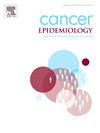新西兰奥特罗阿的儿童和青少年/青年癌症发病率和生存率Māori
IF 2.3
3区 医学
Q3 ONCOLOGY
引用次数: 0
摘要
癌症在人群中的发病率并不相同,在儿童和年轻人中也是如此。在这项研究中,我们汇集了全面的国家健康记录数据,以描述Māori儿童和青少年/年轻人(AYA)的癌症发病率和生存率,并将其与欧洲的经验进行比较。从新西兰癌症登记处提取了2007年至2019年期间诊断时年龄小于25岁的所有癌症病例。比较了Māori和欧洲儿童/AYA之间的癌症发病率和发病率。我们还使用Kaplan-Meier(1、3和5年癌症特异性生存)和Cox比例风险模型(风险比)来比较这些组之间的生存结果。我们发现Māori和欧洲人在某些类型的儿童/AYA癌症的倾向方面存在差异:Māori更容易被诊断为预后较差的癌症(如中枢神经系统/脑癌),而不太可能被诊断为预后良好的癌症(如霍奇金淋巴瘤和黑色素瘤)。即使在调整了癌症类型的差异后,Māori也不太可能在诊断出癌症后存活下来,生存差异的程度取决于所调查的癌症,注意到由于绝对死亡人数低,这些癌症特异性观察结果容易出现精度问题。进一步对导致生存差异的因素进行定量和定性研究,特别是在获得早期诊断和治疗方面的研究,可以为旨在改善Māori患者的生存和解决差异的行动提供有用的信息。本文章由计算机程序翻译,如有差异,请以英文原文为准。
Child and adolescent/young adult cancer incidence and survival for Māori in Aotearoa New Zealand
Cancer does not occur equally within populations, and this is also true within children and young adults. In this study we draw-together comprehensive national health record data to describe cancer incidence and survival for Māori children and adolescents/young adults (AYA), and compare this with the experience of Europeans. All incident cases of cancer diagnosed between 2007 and 2019 among those aged less than 25 years old at the time of diagnosis were extracted from the New Zealand Cancer Registry. Cancer incidence numbers and rates were compared between Māori and European children/AYA. We also used Kaplan-Meier (1, 3 and 5-year cancer-specific survival) and Cox proportional hazards models (hazard ratios) to compare survival outcomes between these groups. We found differences between Māori and Europeans in terms of propensity toward certain types of child/AYA cancers: Māori are more likely to be diagnosed with poorer-prognosis cancers (like CNS/brain) and less likely to be diagnosed with good-prognosis cancers (like Hodgkin’s lymphoma and melanoma). Māori are less likely to survive their cancer once diagnosed even after adjusting for differences in cancer type, with the extent of survival disparities differing depending on the cancer under investigation, noting that these cancer-specific observations were prone to precision problems due to low absolute numbers of deaths. Further quantitative and qualitative research on the drivers of survival disparities, particularly in the context of access to early diagnosis and treatment, could usefully inform actions aimed at improving survival for Māori and addressing disparities.
求助全文
通过发布文献求助,成功后即可免费获取论文全文。
去求助
来源期刊

Cancer Epidemiology
医学-肿瘤学
CiteScore
4.50
自引率
3.80%
发文量
200
审稿时长
39 days
期刊介绍:
Cancer Epidemiology is dedicated to increasing understanding about cancer causes, prevention and control. The scope of the journal embraces all aspects of cancer epidemiology including:
• Descriptive epidemiology
• Studies of risk factors for disease initiation, development and prognosis
• Screening and early detection
• Prevention and control
• Methodological issues
The journal publishes original research articles (full length and short reports), systematic reviews and meta-analyses, editorials, commentaries and letters to the editor commenting on previously published research.
 求助内容:
求助内容: 应助结果提醒方式:
应助结果提醒方式:


